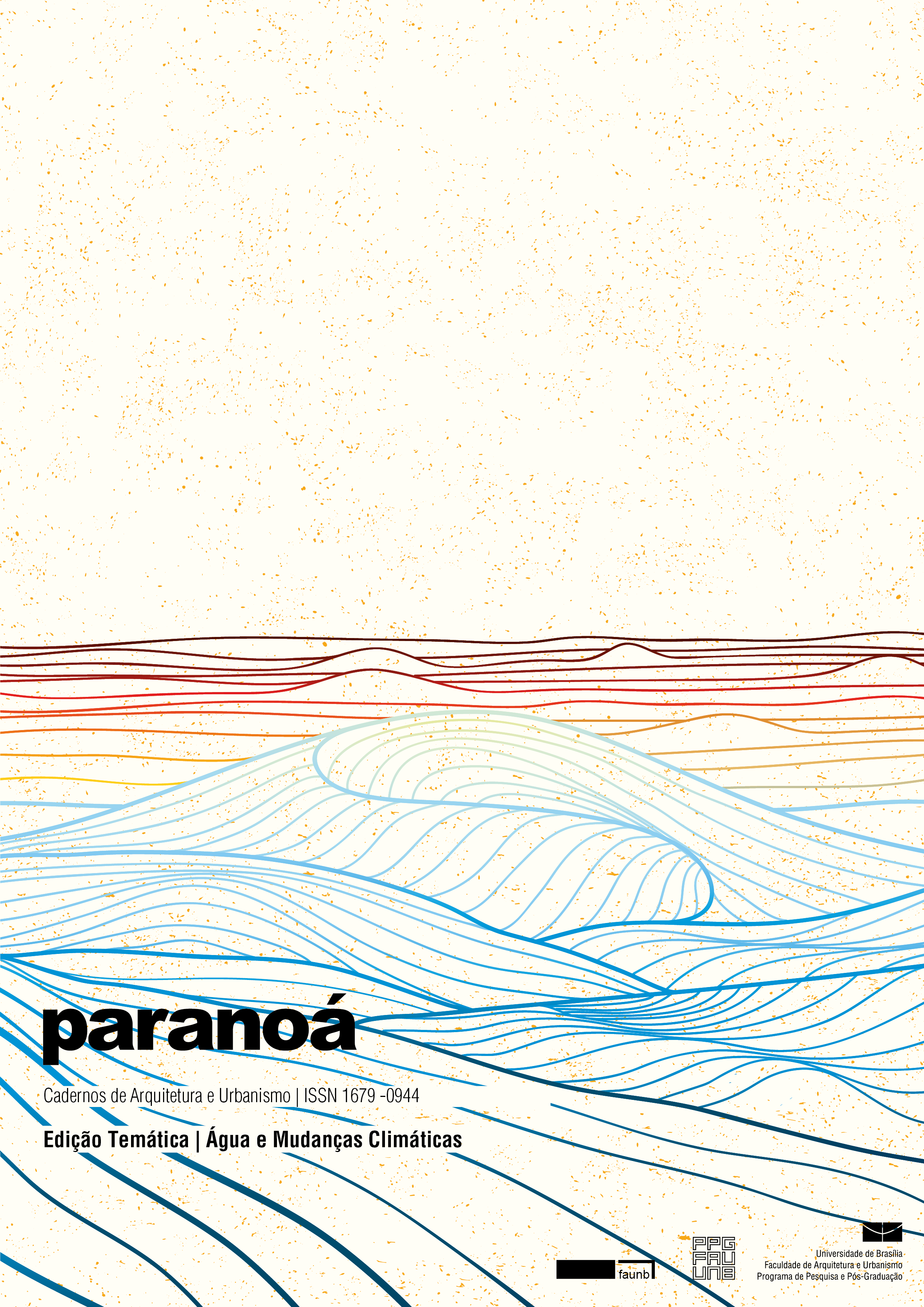Impact of local variables on the determination of the optimal volume of building water system reservoirs according to economic aspects.
DOI:
https://doi.org/10.18830/issn.1679-0944.n34.2023.04Keywords:
Economic viability, Water Harvesting Systems, Climate VariationsAbstract
One of the main concerns today is the spread of the water crisis in the world. The problem is caused, among other issues, by population growth and changes in consumption practices. Building Systems for the Use of Rainwater (SPAAP) are characterized as a solution for reducing the consumption of potable water. The cost of this implementation involves several factors that depend on different variables, such as water tariff, service prices and construction materials and rainfall. This research aims to study the impact of local variables in determining the optimal volume of a SPAAP reservoir considering economic aspects. To this end, the dimensioning of reservoirs in a school building in 5 Brazilian cities was simulated from the perspective of 4 scenarios: the real situation and three more scenarios where two local variables were kept the same for all cities and only one was varied, trying to measure the impact that each of these had on the dimensioning of the reservoir and on the economic viability of the system. In the end, it was found that the tariff structure (prices and readjustment policies) was what most interfered with the viability of the system, and can be thought of as an incentive policy for the implementation of this technology.
Downloads
References
ALIM, Mohammad A.; RAHMAN, Ataur; TAO, Zhong; et al. Feasibility analysis of a small-scale rainwater harvesting system for drinking water production at Werrington, New South Wales, Australia. Journal of Cleaner Production, v. 270, p. 122437, 2020.
ASSOCIAÇÃO BRASILEIRA DE NORMAS TÉCNICAS. Água de chuva - aproveitamento de coberturas em áreas urbanas para fins não potáveis - requisitos. Rio de Janeiro: ABNT, 2019.
BARKER, Adrian; PITMAN, Andrew; EVANS, Jason P.; et al. Drivers of future water demand in Sydney, Australia: examining the contribution from population and climate change. Journal of Water and Climate Change, v. 12, n. 4, p. 1168–1183, 2021.
BRANDÃO, Verônica R.; CAMPOS, M. A. S. Avaliação ambiental de sistemas de aproveitamento de água pluvial – um mapeamento da literatura. Paranoá: cadernos de arquitetura e urbanismo, n. 23, p. 93–111, 2019.
CAMPOS, M. A. S. Qualidade de investimentos em sistemas prediais de aproveitamento de água pluvial: Uso de Particles Swarm Optimization. [s.l.] Faculdade de Engenharia Civil, Arquitetura e Urbanismo daUniversidade Estadual de Campinas, 2012.
CONNOR, R.; KONCAGUL, E. TRAN, M. The United NAtions World Water Development Report 2021: valuing water: facts and figures. 2021.] United Nations Educational, Scientific and Cultural Organization, Acesso em: 10 fev. 2023.
CUSTÓDIO, Diego Antônio; GHISI, Enedir. Impact of residential rainwater harvesting on stormwater runoff. Journal of Environmental Management, v. 326, p. 116814, 2023.
GHODSI, Seyed Hamed; ZHU, Zhenduo; MATOTT, L. Shawn; et al. Optimal siting of rainwater harvesting systems for reducing combined sewer overflows at city scale. Water Research, v. 230, p. 119533, 2023.
INSTITUTO NACIONAL DE METEOROLOGIA (INMET). Dados Meteorológicos. Disponível em https://portal.inmet.gov.br/. Acesso em 20 maio 2017.
KHAN, Zaved; ALIM, Mohammad A; RAHMAN, Muhammad Muhitur; et al. A continental scale evaluation of rainwater harvesting in Australia. Resources, Conservation and Recycling, v. 167, p. 105378, 2021.
KIM, Jung Eun; HUMPHREY, Daniel; HOFMAN, Jan. Evaluation of harvesting urban water resources for sustainable water management: Case study in Filton Airfield, UK. Journal of Environmental Management, v. 322, p. 116049, 2022.
PREETI, Preeti; HADDAD, Khaled; RAHMAN, Ataur. Assessing the Impacts of Climate Change on Rainwater Harvesting: A Case Study for Eight Australian Capital Cities. Water, v. 14, n. 19, p. 3123, 2022.
SISTEMA NACIONAL DE PESQUISA DE CUSTOS E ÍNDICES DA CONSTRUÇÃO CIVIL (SINAPI) Disponível em https://www.caixa.gov.br/Downloads/sinapi-composicoes-aferidas-sumario-composicoes-aferidas/SUMARIO_DE_PUBLICACOES_E_DOCUMENTACAO_DO_SINAPI.pdf. Acesso em 20. Maio 2017
SOUTO, S. L.; REIS, R. P. A.; CAMPOS, M. A. S.. Impact of Installing Rainwater Harvesting System on Urban Water Management. Water Resources Management, v. 37, n. 2, p. 583–600, 2023.
UNITED NATIONS Summary Progress Update 2021: SDG – water and sanitation for all Disponível em: http https://www.unwater.org/sites/default/files/app/uploads/2021/12/SDG-6-Summary-Progress-Update-2021_Version-July-2021a.pdf. Acesso em : 10 fevereiro de 2023.
UNITED NATIONS b. World population Prospect 2022: Sumary of Results Disponível em: http:// https://www.un.org/development/desa/pd/content/World-Population-Prospects-2022. Acesso em: 10 fevereiro de 2023.
Downloads
Published
How to Cite
Issue
Section
License
Copyright (c) 2023 Paranoá

This work is licensed under a Creative Commons Attribution 4.0 International License.
Autores que publicam nesta revista concordam com os seguintes termos:
- Autores mantém os direitos autorais e concedem à revista o direito de primeira publicação, com o trabalho simultaneamente licenciado sob a Licença Creative Commons Attribution que permite o compartilhamento do trabalho com reconhecimento da autoria e publicação inicial nesta revista. http://creativecommons.org/licenses/by/4.0
- Autores têm autorização para assumir contratos adicionais separadamente, para distribuição não-exclusiva da versão do trabalho publicada nesta revista (ex.: publicar em repositório institucional ou como capítulo de livro), com reconhecimento de autoria e publicação inicial nesta revista.
- Autores têm permissão e são estimulados a publicar e distribuir seu trabalho online (ex.: em repositórios institucionais ou na sua página pessoal) a qualquer ponto antes ou durante o processo editorial, já que isso pode gerar alterações produtivas, bem como aumentar o impacto e a citação do trabalho publicado (Veja O Efeito do Acesso Livre).















